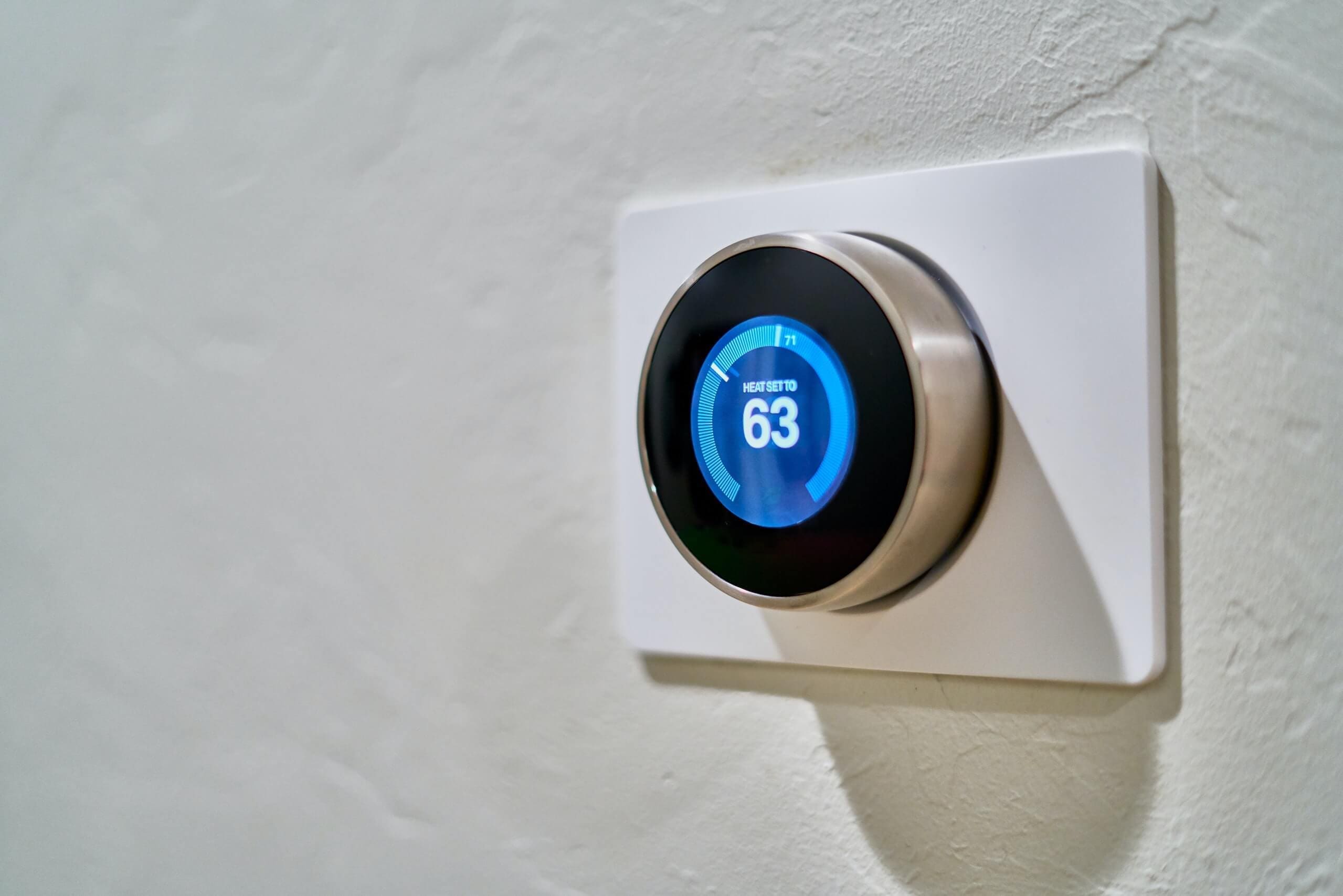Choosing a new thermostat for your home or business can be overwhelming. With seemingly endless thermostat types, there are just so many choices! But the decision comes down to more than price and style. For example, you could choose a geofencing thermostat or an app-controlled thermostat! Some of these capabilities may be of more interest than others. But before getting caught up in the whirlwind of design specifications, it’s important to understand the basics. And the first choice? You need to decide the type of thermostat you want for your home.
The Four Thermostat Types
There are four main thermostat types to know based on thermostat operation style. When searching and comparing different brands, styles, colors and features for your new home thermostat, it will fall into one of these four categories. They are:
- Non-Programmable
- Programmable
- Wi-Fi / Remote
- Smart / Learning
What Is the Difference Between a Programmable Thermostat and a Non-Programmable Thermostat?
Should you choose a programmable thermostat or a non-programmable thermostat? That is the first big question. It’s important to understand the differences between the two thermostat types before making your decision. Let’s get started!
Programmable thermostats can, as the name implies, be programmed to run your home HVAC system at specific times or until a certain temperature is reached. A programmable thermostat automatically adjusts the temperature based on a predetermined schedule that you’ve arranged. This type of thermostat does not require you to manually adjust the temperature! Many homeowners find this incredibly beneficial because it allows the HVAC system to operate whether you’re home or not. Essentially, you are able to set the temperature in advance in order to accommodate your temperature needs. For example, if you want a warmer temperature while you are away in order to save energy and money, the thermostat will automatically adjust even after you’ve left. Programmable thermostats are generally more expensive than non-programmable thermostats.
A non-programmable thermostat, also known as a manual thermostat, requires you to adjust the temperature manually in order to run your home HVAC system. Otherwise, the thermostat and your space will remain the same temperature. For example, if you require a cooler temperature at night in order to achieve better sleep, you’ll need to manually adjust the thermostat to cool down the house. These thermostats are generally less expensive than programmable thermostats.
What Is the Difference Between a Programmable Thermostat and a Smart Thermostat?
Do you remember when your elementary school teacher explained that all apples are fruit, but not all fruits are apples? This idea applies to programmable thermostats and smart thermostats. All smart thermostats are programmable thermostats, but not all programmable thermostats are smart thermostats.
Programmable thermostats are a big step up from manual thermostats. They allow the user to set different temperatures for various times of the day or days of the week, can follow a predetermined schedule and are cost-effective. However, a programmable thermostat does not automatically mean the thermostat is capable of connecting to the internet. internet connection.
In contrast, Wi-Fi and smart thermostats provide greater convenience and flexibility with their internet connection capability. These models include an accompanying app that allows users to control the thermostat via a smartphone or tablet. Without internet connectivity, non-Wi-Fi programmable thermostats can only be scheduled on the thermostat unit itself. Smart thermostats provide automation, the ability to control the system even when you’re away from home, and likely voice control or smart home connectivity options.
What Is the Difference Between a Wi-Fi Thermostat and a Smart Thermostat?
Now for a technical distinction between Wi-Fi thermostats and smart thermostats. Going back to that fruits and apples example for a moment; All smart thermostats are Wi-Fi thermostats, but not all Wi-Fi thermostats are smart thermostats.
Before we dive into the differences between the two, let’s start with an important commonality: both Wi-Fi and smart thermostats are programmable. Both devices connect to the internet, allowing you to arrange a predetermined heating and cooling schedule via an app on your phone or tablet.
The main difference between the two devices is that a smart thermostat can learn from your usage and make decisions accordingly, whereas a Wi-Fi thermostat cannot. The latter can only make adjustments based on information provided by the user. Another key difference between the two is the use of geofencing. Geofencing detects your presence and alerts your HVAC system when you’re at home to better enable system operations. Smart thermostats also utilize technology to analyze energy usage and identify technical problems.
Choosing the Best Home Thermostat Type
Choosing a thermostat is not a decision that should be taken lightly! Your home thermostat actually has a significant impact on your home HVAC system and overall indoor comfort. Take the time to weigh the factors in order to choose the device that best accommodates your needs.
Although one type of thermostat may be more popular or less expensive, that does not automatically mean it is the right choice for you. If you’re interested in specific advice for your home, or help with installation, IAQ.Works can connect you with a local professional! We’re sure they can help find the best thermostat type for your home.



